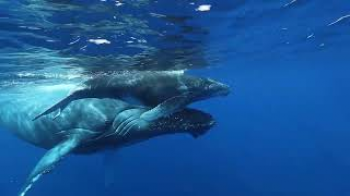Marine animals: the humpback whale (video)
updated 2021
Space technologies are used to track marine animals, many of which have been tagged with Argos transmitters to follow their movements, while satellite altimetry data are giving us new insights into their behaviour and migration patterns. For example, humpback
whales in the southern hemisphere follow a specific migration path, spending summer
in the milder waters of the Southern Ocean in search of food, and winter in tropical waters where they mate and give birth. Humpback whales reappeared around Reunion Island in 2008 and were seen there up to 2014. But in 2015 and 2016, they were seen only rarely and left much earlier than usual. What happened?
Several explanations have been suggested. Did El Niño alter the ocean currents? If so,
the impact would have been minimal, as humpback whales are thought not to be affected
by currents and storms. What’s more, analysis of maps from altimetry satellites shows
no significant change in currents. Could it be global warming and El Niño combined?
The Indian and Southern oceans have got warmer, particularly in 2015 and 2016, and this could explain why the whales are leaving earlier in autumn for the colder waters of
the Antarctic. But warming may also be affecting development of phytoplankton, the
main diet of krill, the small crustaceans in the Southern Ocean on which the whales feed. This is a line of investigation worth pursuing. Krill have been declining since the 1970s, and other factors in addition to warming are at work: fewer nutrients that phytoplankton need to develop are being transported by currents and mixing of waters;
commercial fishing of krill in the Antarctic is growing unchecked; and sea ice extent is
decreasing. As phytoplankton need sea ice in spring to develop, less of it means fewer phytoplankton and therefore fewer krill. However, data from the Saral satellite show that, unlike in the Arctic, sea ice extent in the Antarctic temporarily increased between 2013 and 2016. Warmer waters drive glacier melting that releases large volumes of freshwater. As the water is less saline and its freezing point rises, this likely explains why there is more sea ice. Scarcity of food nevertheless remains a possible explanation for the humpback whales deserting the region. With fewer krill around, the whales may have found more favourable feeding grounds or simply stopped making the long trip to Reunion and Madagascar to conserve energy.
Since 2017, the humpback whales are back. Certain models currently being validated likely confirm a decline in krill caused by the lack of phytoplankton.
https://www.aviso.altimetry.fr/en/applications/biology/marine-animals.html
https://youtu.be/CAwMSazFiKA
Downloads
| File | Type | Size | Lang | Resolution | Creation date | Represented date |
|---|---|---|---|---|---|---|
| 16_marine_animals.jpg | Image | 5.93kb | 320x180 | 2021-10-01 | ||
| 16_marine_animals.mp4 | Video | 34.48Mb | en | 2021-10-01 | ||
| 16_marine_animals_humpback_whale.pdf | Electronic document | 2.08Mb | en | 2021-10-01 | ||
| 16_animaux_marins.mp4 | Video | 33.95Mb | fr | 2021-10-01 | ||
| 16_baleines.pdf | Electronic document | 2.06Mb | fr | 2021-10-01 |
- Geographic area : Indian Ocean
- Instrument : Altimeter, In situ
- Parameter : Geostrophic ocean currents, Sea level anomalies
- Topic : Marine animals
- Satellite : Multimission



